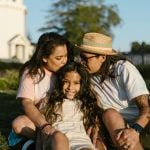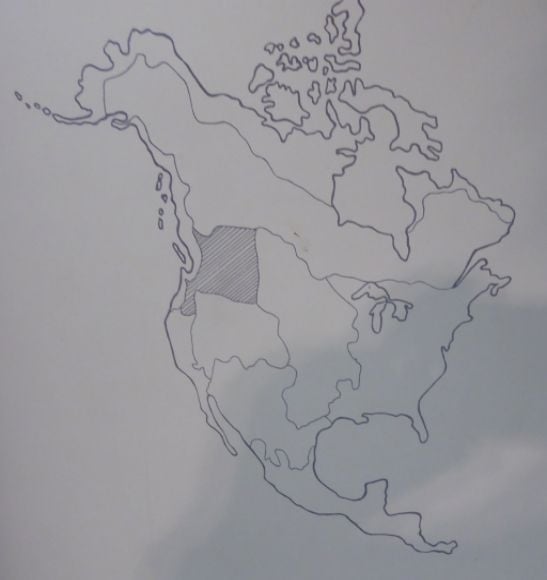Could You Have Native American Heritage? Here’s How to Find Out

If you’ve been wondering whether you have Native American ancestors in your bloodline, it’s time to find out. Perhaps your great-grandmother told you stories about having Cherokee or Sioux heritage but you were too young to ask her more, or maybe you’ve noticed certain family traditions that hint at Indigenous roots.
No matter what sparked your curiosity, knowing if you have Native American roots can give you several meaningful benefits. For one, it can help you understand your family’s history and cultural background. It might also give you insights into new branches of your family tree, meaning you’ll have a higher chance of locating relatives you didn’t know existed. And let’s not forget about the health awareness. Did you know that all populations have certain health predispositions that could help your doctor tailor health screenings? And last but not least, enrolled trial members may qualify for educational benefits, healthcare services, and other social services provided by tribes.
According to the U.S. Census Bureau’s 2021 American Community Survey, the American Indian and Alaska Native community makes up nearly 2.6% of the U.S. population, with around 8.75 million people identifying at least partially with these groups.
Now, how to know if you have Native American blood? In this article, you’ll find helpful tips for this.
Who Are Native Americans? An Easy Explanation
Native Americans, also known as American Indians or Indigenous Americans, are the Indigenous peoples of the United States. They were the original inhabitants of the land long before the European settlers arrived. They include hundreds of tribes and nations, with each one having their own culture, customs, traditions, and languages.
Today, there are 574 federally recognized tribes in the United States.
Native American Tribes With the Highest Numbers of Members

How to Check if You Have Native American Ancestry
The following tips will be useful for those who want to discover their American Indian roots.
Begin With Family Histories and Records
Any search, no matter what you’re aiming to find, begins with what you or other people around you already know. In the case with ancestor search, those people are your family members, particularly grandparents or great-grandparents (they’re more likely to know information about your ancestors). Asking distant relatives, such as aunts and uncles, cousins, and great-aunts and great-uncles, if they know any family stories is worth giving a shot too.
It’s a good idea to inquire if they remember anything specific or if they have old family documents, letters, photos, or records where your Native American ancestors are pictured or where their names are listed.
On your part, it’s important to note down every detail you hear, even something that may seem irrelevant at first, like places, dates, or unusual family traditions. And when you gather all the necessary information, you can start cross-referencing it with official sources to get to your ancestry truth.
Check Census and Historical Records
After having gathered information from relatives, it’s now time to resort to official sources that may give you clues about your Native American heritage. Census records are a great place to start. For this, go to archives.gov and begin your search. The website has records from 1790 to 1950 that are maintained by the National Archives and Records Administration. Search for the first and last name of the person you want to find. To narrow your search, multiple filters are available, such as location, enumeration district, and Indian reservation schedule. The site even claims that misspelling a name won’t prevent you from locating the right individual, as the search engine will return any close variations.
Then there are historical records, which are any old documents with historical value, such as birth, marriage, and death certificates, military records, land deeds, immigration and naturalization papers, church registries, and even newspapers. To find this in person, you can visit your local library, vital records offices, or National Archives Research Centers. If an online search is more of a preference for you, you can go to archives.gov or bia.gov.
Visit Genealogical Websites
Genealogical research on specific websites where you may trace American Indian ancestry include FamilySearch.org, Ancestry.com, FindMyPast.com, and MyHeritage.com. These sites have historical record collections and provide advanced search tools for you to find your relatives.
Depending on the genealogical resource you use, it’s possible to get access to a person’s birth and death dates, names of their parents, their spouses’ names, where they worked, cause of death, and service records, among other things.
In addition, some of these websites include access to Native American records, such as Indian Census Rolls, Dawes Rolls, and tribal enrollment applications.
Take a Genetic DNA Test
While DNA tests make it easy to locate relatives from all over the world, it’s a bit tricky in case with Native Americans. The thing is, the accuracy depends on how recent your Native American ancestor is. Another concern is that a DNA test can’t tell what tribe a person belongs to. Kate Eakman from Legacy Tree Genealogists states the following: “You may know that you are a quarter or even half Native American ancestry, but it can’t tell you, for example, that it’s the Cherokee tribe or the Iroquois tribe, or the Nez Perce tribe.“
In other words, if you take a DNA test, it may only reveal if you have a certain percentage of Native American ancestry, and that’s it. That’s why DNA evidence isn’t accepted to prove Native American membership. But if you just want to find out if you belong to any Native American group without specifying which one exactly, a DNA test is what you need. For more accurate determination, it’s essential to combine this method with others.
Search on People Lookup Websites
People lookup websites or people search websites are a great modern source of public information. One of them is Native American Netroots, where you can find a person’s date of birth, phone number, address history, workplace details, and relatives, among other details.
If you have a hard time locating someone, you can run a background check on yourself and look at the “Relatives” section in your profile on the website. This section will give you a list of your possible relatives, who may also be Native Americans. While the site doesn’t reveal whether your relatives belong to any Native American tribes, you can combine the information from Native American Netroots with other methods to see if the relative you found is a Native American.
Another way to find relatives you didn’t know about is by looking up those relative you already know. It may be that you’ll be able to locate those who weren’t in your profile on the people search platform.
Final Tips for Figuring Out if You Have Native American Ancestry
Finding out whether you have Native American people in your lineage can give you plenty of benefits. If you’re a novice at researching your family history — particularly one relating to Native American ancestry — certain tips can help you out. Start with talking to your family and gathering as much information as possible. Then, resort to checking official sources, such as census and historical records, genealogical research, DNA tests, and people search websites (as they provide public information from reliable sources).

